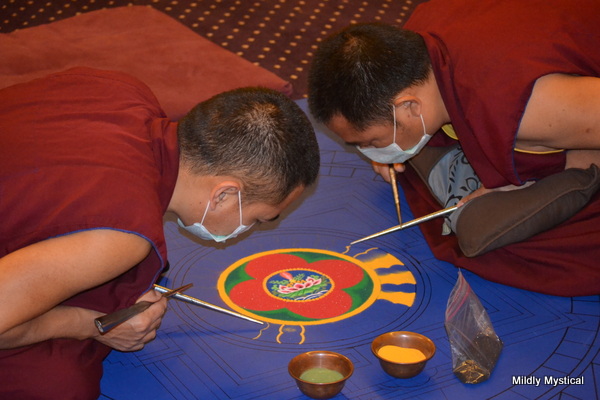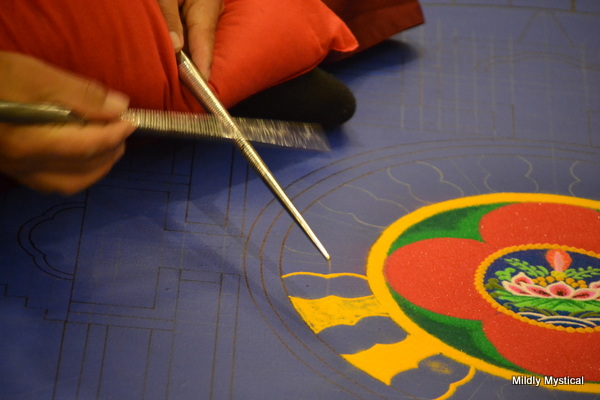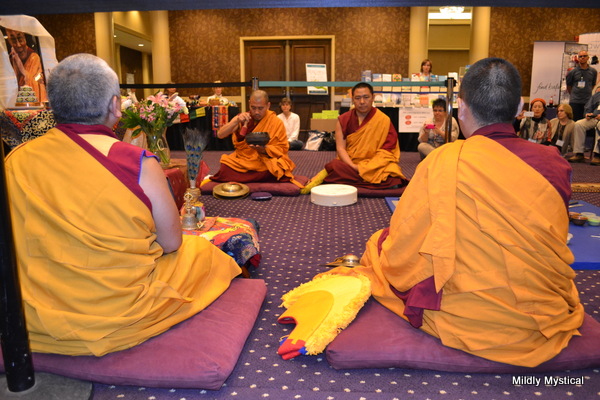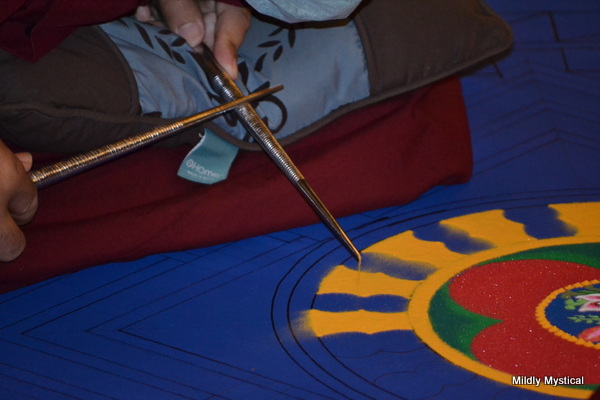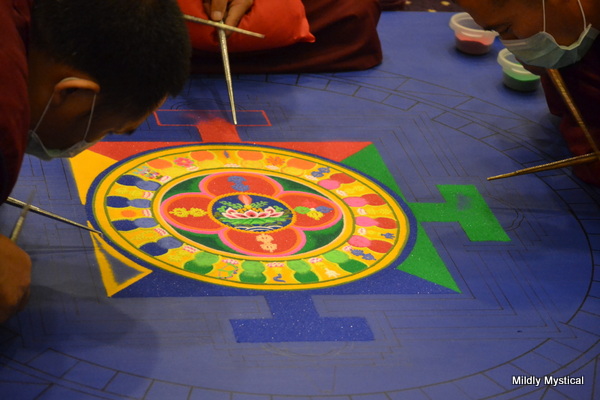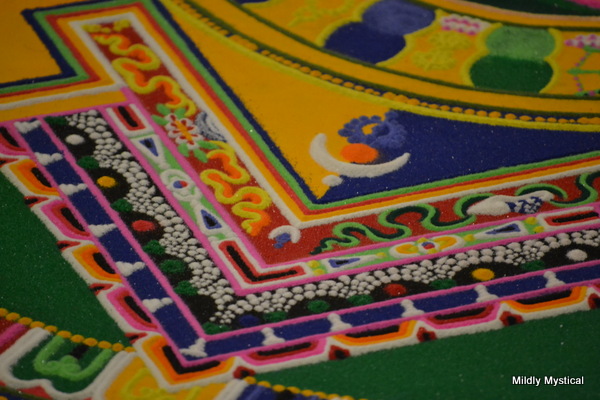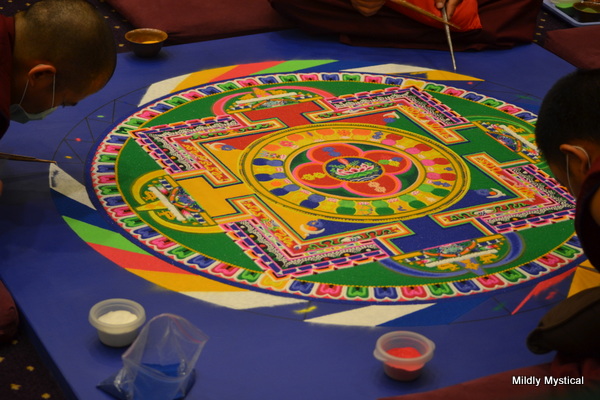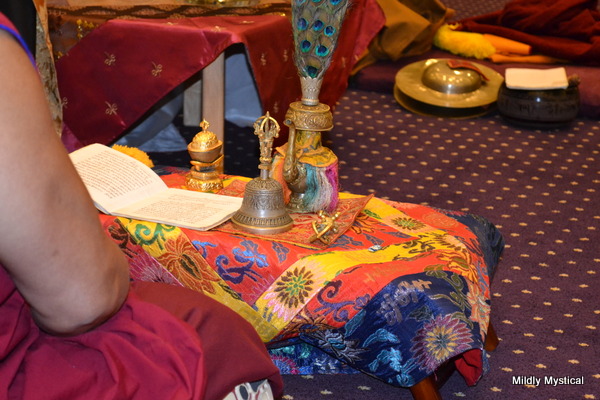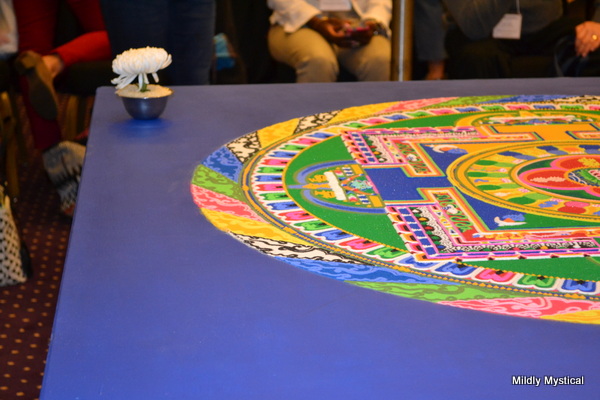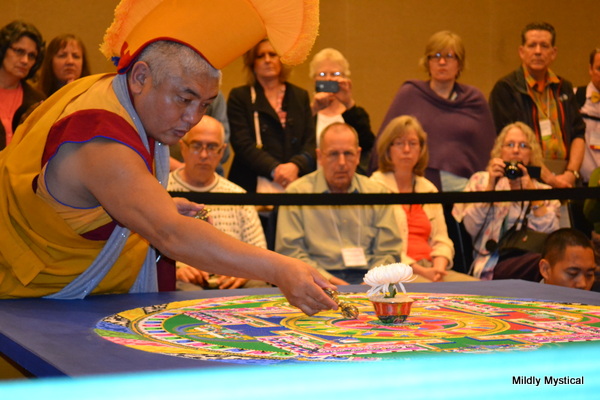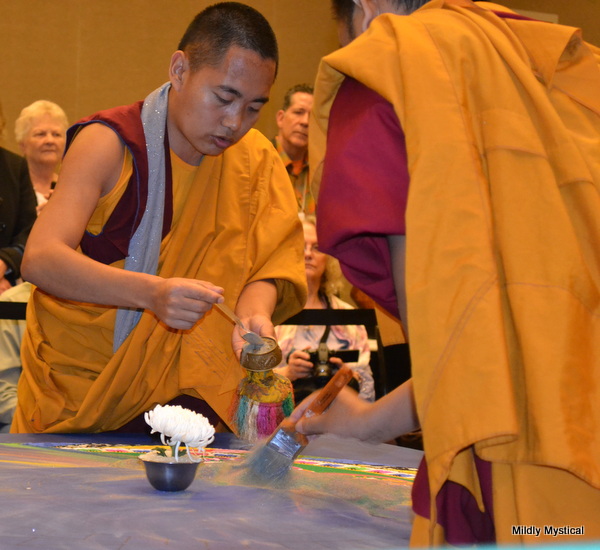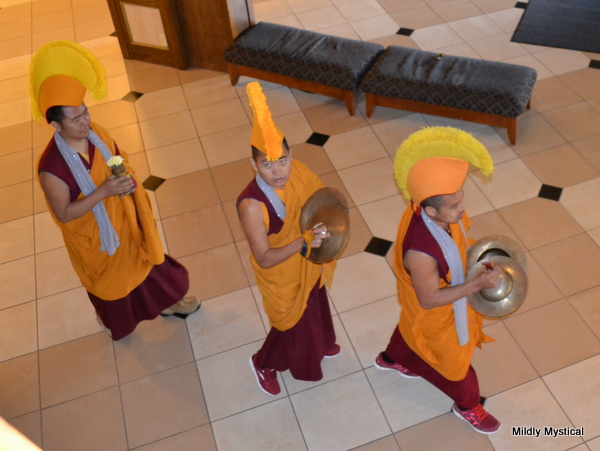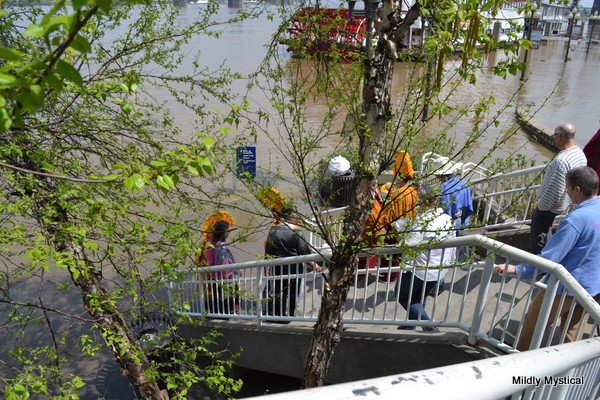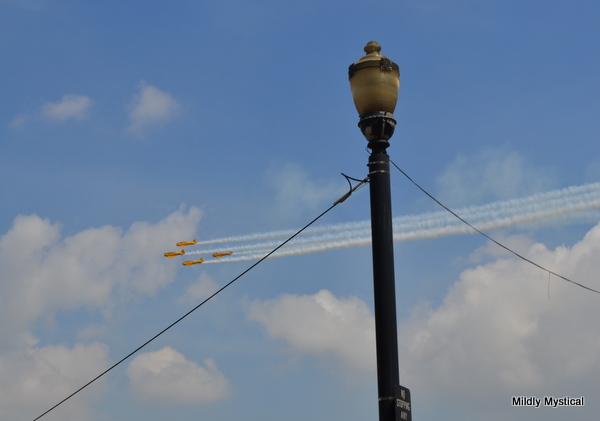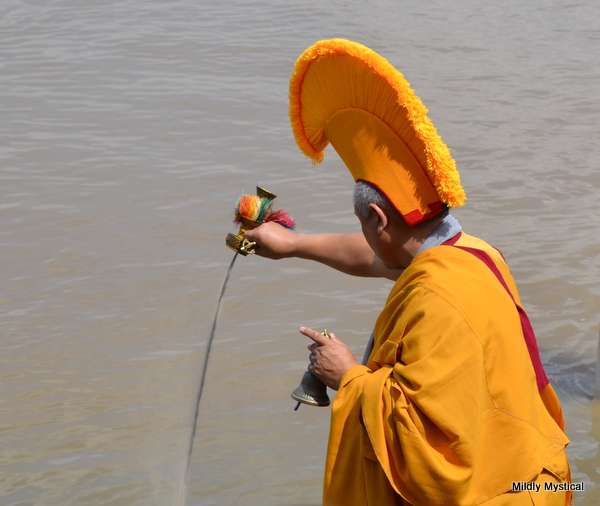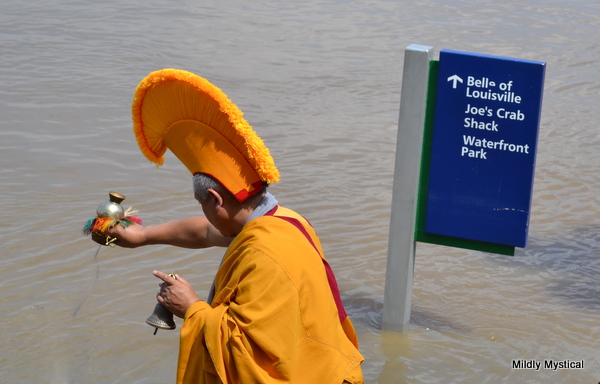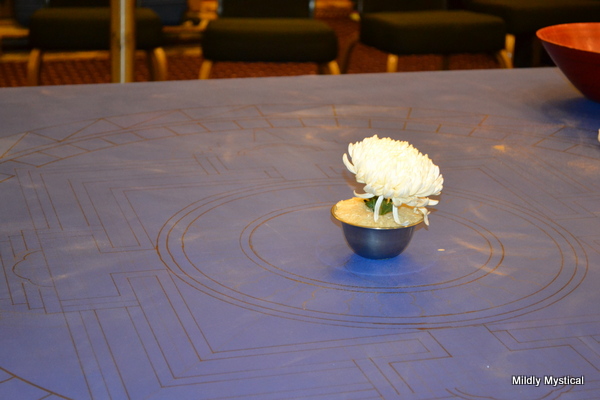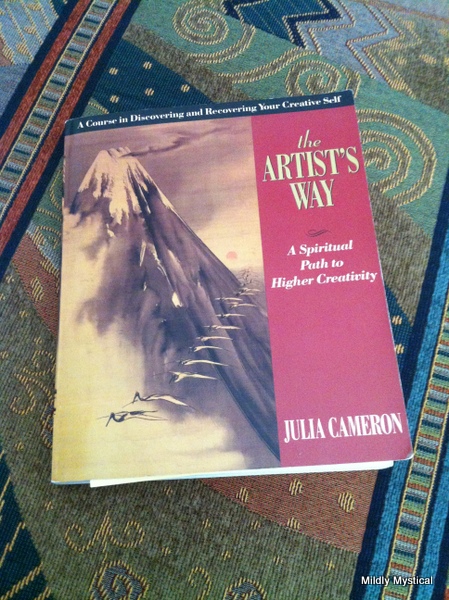As part of the Spiritual Directors International conference in Louisville, April 14-17, 2015, these monks from the Drepung Gomang Center for Engaging Compassion and the Drepung Gomang Sacred Arts Tour created a sand mandala for the sake of wisdom, compassion, and healing.
The monks lean across lines and arcs
like the funnels they wield,
as if tilting a column of sand
up the spine
to pour from a third eye.
The grains trickle in rivulets
between skeletal lines
penciled onto a blue field.
This gold, this red,
in precisely this place—
the design takes flesh
in lavish detail.
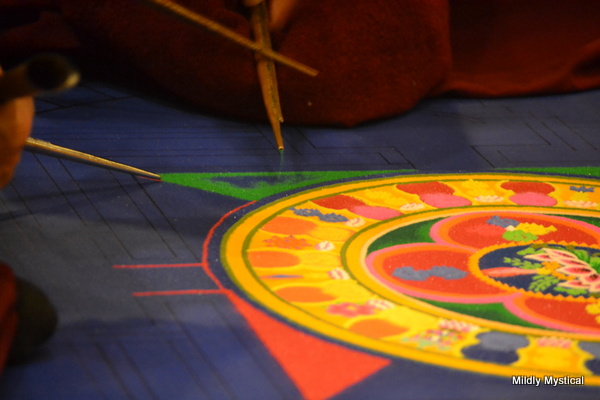
This work is prayer
begun with chant
from which the air yet hums.
Ringing metal, rubbed like a firestarter,
sings as it coaxes sand
from the tiny mouth of a ribbed silver cone.
For days the sand pours,
the chants rise,
the mandala widens.
Each morning a ritual:
with one hand the leader rings a bell,
with the other he holds a blade.
Beside the completed design
sits a white flower
in a silver bowl.
Atop the lotus of sand
in the mandala’s center,
the bowl becomes a mirror.
Now the blade, ever-present
through all the days of creation,
cuts from the points of the compass
to the center—
destruction from every direction.
A brush sweeps the careful work
into swirls of muddied color—
a heart-sob—
for all the careful tending vanished,
for every thing of beauty gone.
Behind four monks clad in gold,
a quiet crowd walks to the river.
As if in tribute,
four golden planes fly
in formation overhead.
Standing in the current,
the silver-haired leader
tilts a vessel,
yielding to the river
the sand,
the work,
the prayers,
the loss,
the acceptance.
The river carries this embodiment
of compassionate understanding
out into the world.
Returning,
the four walk with ease,
smiling, their shoulders relaxed,
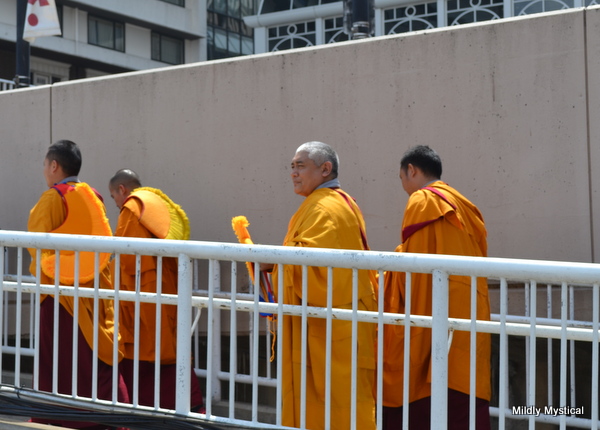
while I keep taking
photographs to keep.
Susan Christerson Brown

